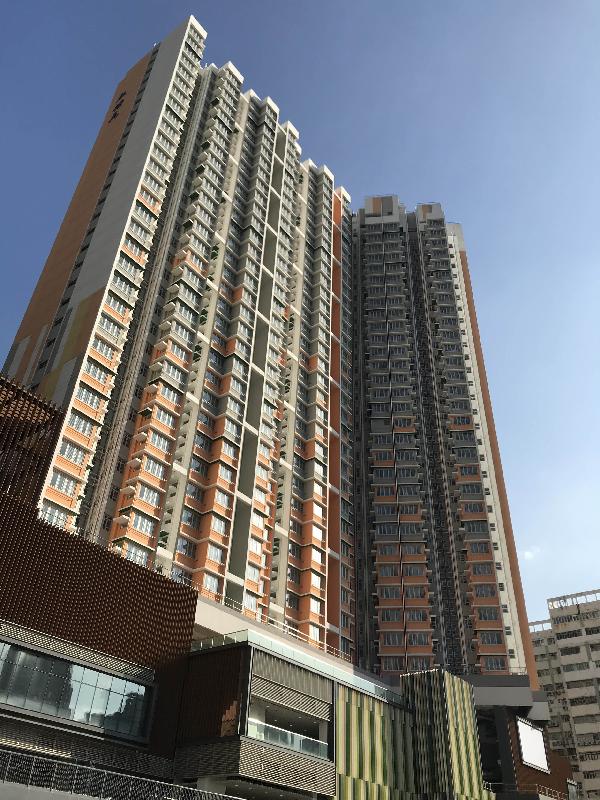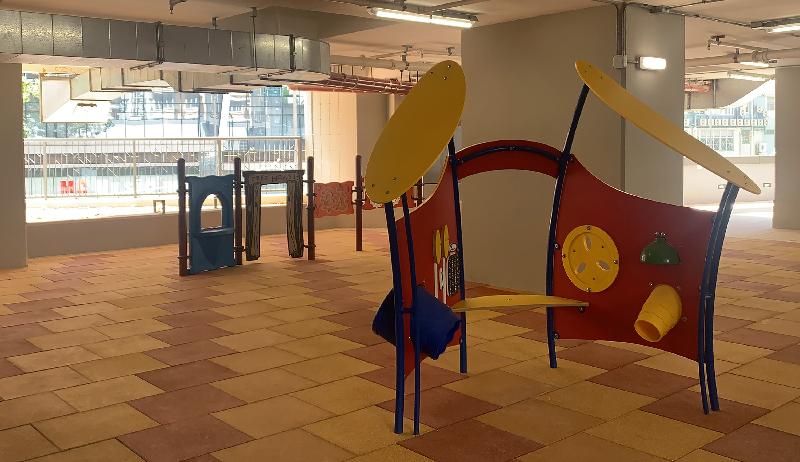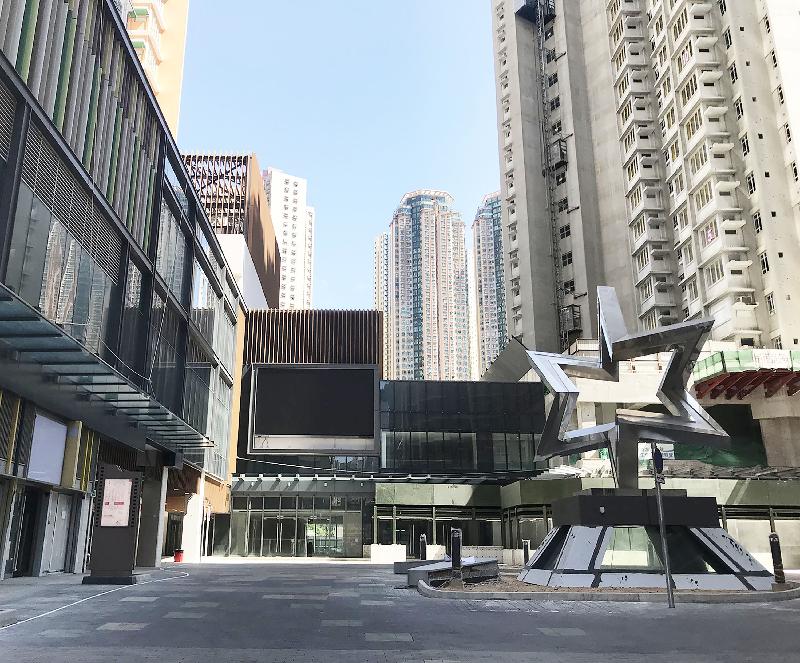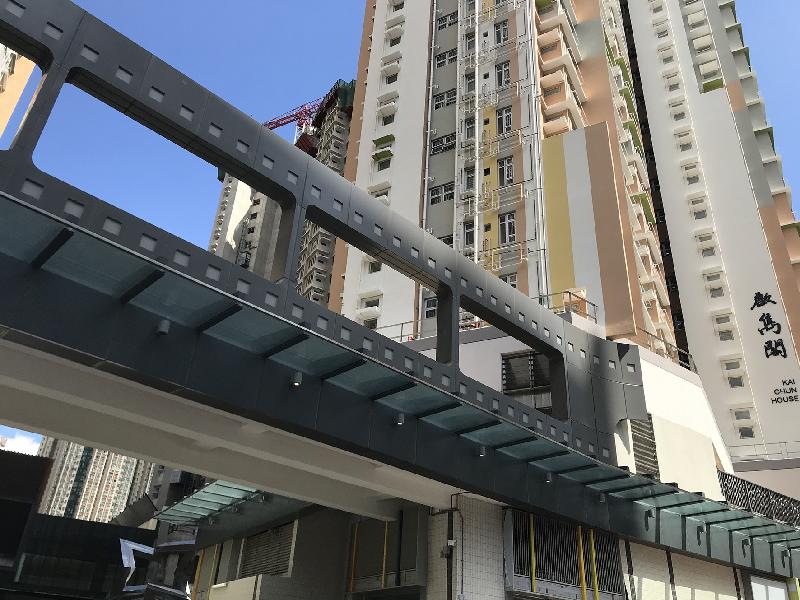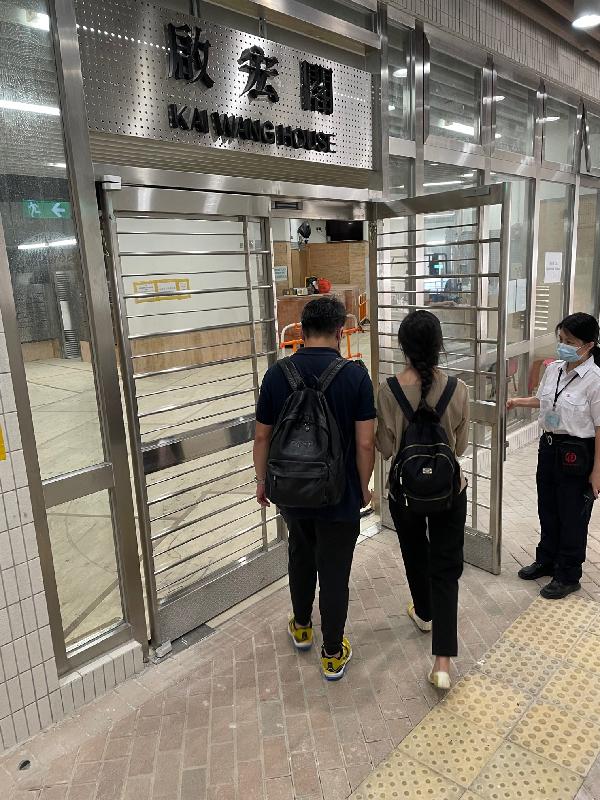HA starts intake of residents at Kai Chuen Court Phase 1 PRH estate (with photos)
The following is issued on behalf of the Hong Kong Housing Authority:
The Hong Kong Housing Authority (HA) always endeavours to provide affordable public rental housing (PRH) to low-income families with housing needs. Tenant intake for the newly completed Kai Chuen Court Phase 1 PRH estate by the HA in the Diamond Hill Comprehensive Development Area (CDA) at Choi Hung Road, Wong Tai Sin, has already started in phases.
The site of the Diamond Hill CDA was formerly known as Tai Hom Village. This large-scale comprehensive development project in an urban area, which is rare in recent years, comprises Kai Chuen Court Phase 1 PRH, Kai Chuen Court Phase 2 Green Form Subsidised Home Ownership Scheme (GSH) and Kai Cheung Court Home Ownership Scheme (HOS). A water feature park, landscaped walk, public transportation interchange and religious facilities, etc, are also provided in the CDA.
Kai Chuen Court Phase 1 consists of two domestic blocks and a shopping centre. The 33-storey Kai Wang House and the 38-storey Kai Chun House have adopted a site-specific design providing a total of 1 018 units for about 2 680 tenants.
Chief Architect of the Housing Department Miss Chimmy Chu said, "Site-specific design has allowed us to plan the public housing blocks in accordance with the specific features and limitations of the site, with a view to better utilising the plot ratio and increasing the public housing production.
"The Diamond Hill CDA is a rare large-scale development project located in the urban area. Apart from a rich historical and cultural context, the site is surrounded by high-density residential, commercial and industrial buildings, as well as heavy traffic roads. Therefore, it is a very challenging project as the design team was required to optimise the block disposition and design within the site, while in the meantime, take into account communal facilities together with local culture. We look forward to bringing new vitality to the community and creating a comfortable and harmonious urban environment for the locals when the entire development is completed."
Miss Chu said that Kai Chuen Court and other subsidised housing under construction are designed with stepped building heights, with a view to providing interesting visuals, and creating a harmonious environment with the surrounding developments nearby, while the development potential is fully utilised.
Taking into account the microclimate studies and environmental assessments for the design of the newly completed Kai Chuen Court Phase 1 (including a shopping centre), the development proposal adopted a parallel block disposition to establish wind corridors between the buildings to enhance natural air ventilation.
"These ventilation corridors which align with the adjoining Tai Yau Street and Sze Mei Street will not only enhance the wind environment within the development, but will also become the area's ventilation corridors and visual corridors. People who are working or living in this neighbourhood shall enjoy the natural air as well as the mountain view," Miss Chu explained.
"Both 'sustainability' and 'well-being' are important design considerations. We hope that the residential units will benefit from the natural lighting and effective cross-ventilation to reduce the energy consumption in electric lights and air-conditioning. As the site is located in the vicinity of Choi Hung Road and Lung Cheung Road with heavy traffic, acoustic fins are built at some locations of the blocks, and acoustic windows are installed in some flats to reduce the impact of road traffic noise to the households."
On the overall composition of buildings, the colour tone for the façades of the Kai Chuen Court blocks and Kai Cheung Court blocks is taken from the street scene elements of the old Tai Hom Village, including rust (orange), wood (light brown), plants (green), metallic zinc (blue-green) and masonry (grey brown).
"An orange and light brown colour tone is applied to the facades of the two Kai Chuen Court Phase 1 PRH blocks to give a light and refreshing feeling. The adjoining Kai Chuen Shopping Centre adopted dark brown as major colour tone, while its western external wall (facing the water feature park) will be of aluminum cladding in various green tones to match the future water feature park," Miss Chu said.
A star sculpture is installed in the centre of the square between Kai Wang House and Kai Chun House as a symbolic image reminiscent of the film-making business in the old days of Tai Hom Village. Moreover, the external wall of the link bridge connecting Kai Wang House and Kai Chun House is designed with film-like aluminum cladding, to echo with the star sculpture in the central court. Finally, inside the ground floor lobbies of the domestic blocks, there will be artists' impressions of the former Tai Hom Village to evoke the collective memories of the tenants.
Kai Wang House and Kai Chun House sit atop three-storey and one-storey podiums respectively, with retail facilities to cater for the needs of residents' daily lives. A wet market is located in the basement and there are street shops along Choi Hung Road and pedestrian walkways in the estate. The retail facilities are expected to be available one after another between late-2021 and mid-2022, providing residents with various shopping choices. Landscape gardens and leisure facilities are located on the third floor podium of Kai Wang House and the first floor podium of Kai Chun House, including fitness equipment, children's play areas, and landscape and greenery for residents to enjoy healthy and relaxing moments.
Adjacent to the MTR Diamond Hill Station, Kai Chuen Court has a good transport network with numerous bus and licenced minibus routes to various districts. With the completion of other public housing and facilities including the water feature park and landscaped walk in the development area, the Diamond Hill CDA will add brilliant vitality to the surrounding neighbourhood.

